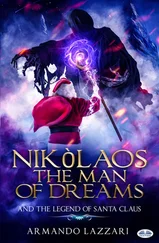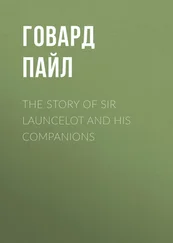Jessie Weston - The Legend of Sir Lancelot du Lac
Здесь есть возможность читать онлайн «Jessie Weston - The Legend of Sir Lancelot du Lac» — ознакомительный отрывок электронной книги совершенно бесплатно, а после прочтения отрывка купить полную версию. В некоторых случаях можно слушать аудио, скачать через торрент в формате fb2 и присутствует краткое содержание. Жанр: foreign_prose, foreign_antique, на английском языке. Описание произведения, (предисловие) а так же отзывы посетителей доступны на портале библиотеки ЛибКат.
- Название:The Legend of Sir Lancelot du Lac
- Автор:
- Жанр:
- Год:неизвестен
- ISBN:нет данных
- Рейтинг книги:5 / 5. Голосов: 1
-
Избранное:Добавить в избранное
- Отзывы:
-
Ваша оценка:
- 100
- 1
- 2
- 3
- 4
- 5
The Legend of Sir Lancelot du Lac: краткое содержание, описание и аннотация
Предлагаем к чтению аннотацию, описание, краткое содержание или предисловие (зависит от того, что написал сам автор книги «The Legend of Sir Lancelot du Lac»). Если вы не нашли необходимую информацию о книге — напишите в комментариях, мы постараемся отыскать её.
The Legend of Sir Lancelot du Lac — читать онлайн ознакомительный отрывок
Ниже представлен текст книги, разбитый по страницам. Система сохранения места последней прочитанной страницы, позволяет с удобством читать онлайн бесплатно книгу «The Legend of Sir Lancelot du Lac», без необходимости каждый раз заново искать на чём Вы остановились. Поставьте закладку, и сможете в любой момент перейти на страницу, на которой закончили чтение.
Интервал:
Закладка:
In the words of a recognised authority on folk-lore: 'Among many peoples the ipsissima verba of traditional tales are insisted upon; the form, and even the details of the form, are often as much a part of the tradition as the substance of the tale.' 61 61 Mr. E. S. Hartland, to whom I submitted the question.
Therefore when we find two stories of marked traditional and folk-lore character agreeing with each other in sequence of incident, detail, and even words, we do not necessarily conclude that the versions are connected by borrowing: they may be, but it is at least equally possible that they represent independent versions of the same oral original.
This is, of course, well understood by the folk-lore student; but unfortunately it is too often ignored by the literary critic, who is too prone to devote attention to the literary form, while he ignores the essential character of the story. Yet in solving the problem of sources it is this latter which is the determining factor.
In examining into the sources of Chrétien de Troyes it is well to remember that it is easy to exaggerate the necessity for a literary source; it is difficult to exaggerate the conservative tendencies of a professional story-teller of that date.
But besides the Arthurian legend proper, there was also current in Chrétien's time a great mass of popular folk-lore, which, certainly on the Continent, probably also on our island, 62 62 Cf. M. Ferd. Lot 'La patrie des lais Bretons,' Romania , vol. xxviii.
was told, or rather sung, in the form of mythical tales or lais . These lais , in the first instance in the Breton tongue, and independent of the Arthurian cycle, were later translated into French eight-syllabic verse, and largely Arthurised—if I may use the word.
The process in vogue appears to have consisted of two stages: in the first, the king at whose court the events took place (himself generally anonymous) was identified with Arthur; in the second stage, the original hero was replaced by one of Arthur's knights. Among the specimens which have been preserved we have examples of all the stages: lais entirely independent of Arthur; lais , the scene of which is laid at Arthur's court; lais in which the hero is one of Arthur's knights; but one and all are in the same metre, that of Chrétien's poems. Of an intermediate French form we have no trace.
The lai of Tyolet , to which we have previously referred, is an excellent example of this gradual 'Arthurisation.' As we have it, the court at which the events take place is that of Arthur, the loyal friend of the hero is Gawain, but nowhere else do we meet with Tyolet as one of Arthur's knights: the inference is that we have here a lai in the first stage of assimilation. The lai consists of two parts; the latter half, the stag adventure, is found in a separate form, but here the hero is one of Arthur's most famous knights, Lancelot—the process of assimilation is complete.
The first part of the lai has many features which recall the more famous 'Perceval' Enfances . That Tyolet is anterior to the evolution of the Lancelot story we have shown above 63 63 Chap. iii.
; the probability is that it is also anterior to the great popularity of the Perceval story. When Perceval was once universally recognised as the son of the widowed lady of the forest, there would be little probability of the tale being told of a hero practically unknown to Arthurian story. His adventures taken over by more famous knights, Tyolet disappeared from the roll of heroes.
Again, among the lais we have an important group dealing with the main idea of a knight beloved by the wife of his lord, rejecting her advances, incurring her displeasure, and finally departing to fairyland with a fairy bride. Of this story we have three important variants, agreeing in their main features but differing in detail: the lais of Graalent , Guingamor , and Lanval . Of these three, the scene of the two first is laid at the court of an anonymous king; the action of the third, translated by a contemporary of Chrétien, passes at the court of Arthur. But, though the lai of Guingamor has only reached us in its earlier and independent form, Chrétien himself refers to it in an Arthurised version. He brings Guingamor to Arthur's court, and says of him,
' de l'Isle d'Avalon fu sire.
De cestui avons oï dire
Qu'il fu amis Morgain la fee,
Et ce fu veritez provee. '— Erec , ll. 1955-8.
M. Ferd. Lot 64 64 'Morgue la Fée et Morgan Tud,' Romania , vol. xxviii. p. 327.
suggests that the identification is probably due to Chrétien himself, but if we examine the passage closely I do not think we shall find it to be so. It occurs in a list of knights who visit Arthur's court for the marriage of Erec. The passage immediately preceding deals with a certain Maheloas of l'Ile de Voirre. 65 65 Professor Foerster's references to this character ( Charrette , lxxiii.) are perplexing. He prints Chrétien's description of the 'Ile' side by side with a parallel passage from Giraldus Cambrensis, Topographia Hiberniæ , informing us that both are 'ganz einfach eine naturgetreue Beschreibung von Irland.' He cannot mean us to understand that the one description is borrowed from the other; the work of Giraldus is at least thirty years later than the Erec ( circa 1186), and that chronicler would hardly go to a romancer like Chrétien for the description of a country he knew personally. But is it a ' Naturgetreue ' description of Ireland at all? Professor Foerster is compelled himself to admit naïvely, ' Gewitter und Stürme fehlen nicht ganz !' Is this not rather a description of the fabled Irish Paradise which Chrétien and Giraldus alike have borrowed from a source common to both?
He then names two brothers, Graislemier de Fine Posterne and Guingamor. The first named is generally identified as Graalent-Mor, the hero of the lai to which I have referred above.
The fact that Chrétien makes the two knights brothers clearly indicates that he knew the close kinship existing between their stories; but why, if dealing with a free hand, he should have made Guingamor, and not Graalent, the lord of Avalon it is difficult to say. If free to choose we should have expected the latter; the lai of Graalent stands in far closer connection with that of Lanval (being a variant of the same story) than with that of Guingamor; and Lanval weds the mistress of Avalon. Or, since both were brothers, both might have been represented as dwelling in that mystic island which had not one queen alone as its denizen but nine. The real explanation alike of the connection and the separation of the two knights appears to me to be that Chrétien knew the one lai , and not the other, in an Arthurised form.
Certainly it seems more probable that the gradual assimilation by the lais of an Arthurian character would, so far as the Continent is concerned, take place on Breton rather than on French grounds. They are originally Breton lais ; Arthur is a Breton, 66 66 Of course I here use the word Breton in a general sense as opposed to French . I do not intend to imply that Arthur is of Continental origin.
not a French, hero; where would Breton folk-lore and Breton traditionary romance be more likely to coalesce than in the home of both? I do not myself believe that such coalition was the work either of Marie de France or Chrétien de Troyes.
In any case it is beyond the shadow of a doubt that when Chrétien wrote his first Arthurian poem there was already afloat a vast body of popular folk-lore connected with the Arthurian legend, and existing under the form of short poems in rhymed, eight-syllabic verse, the same metre, in fact, as that adopted by Chrétien himself. It is also certain that he knew these lais ; highly probable that he knew some of them, as his contemporary Marie de France did, in their Arthurised form. As we shall see presently, there is strong ground for the presumption that for the main incident of his most famous poem, Yvain , he was indebted to such a lai .
Читать дальшеИнтервал:
Закладка:
Похожие книги на «The Legend of Sir Lancelot du Lac»
Представляем Вашему вниманию похожие книги на «The Legend of Sir Lancelot du Lac» списком для выбора. Мы отобрали схожую по названию и смыслу литературу в надежде предоставить читателям больше вариантов отыскать новые, интересные, ещё непрочитанные произведения.
Обсуждение, отзывы о книге «The Legend of Sir Lancelot du Lac» и просто собственные мнения читателей. Оставьте ваши комментарии, напишите, что Вы думаете о произведении, его смысле или главных героях. Укажите что конкретно понравилось, а что нет, и почему Вы так считаете.












